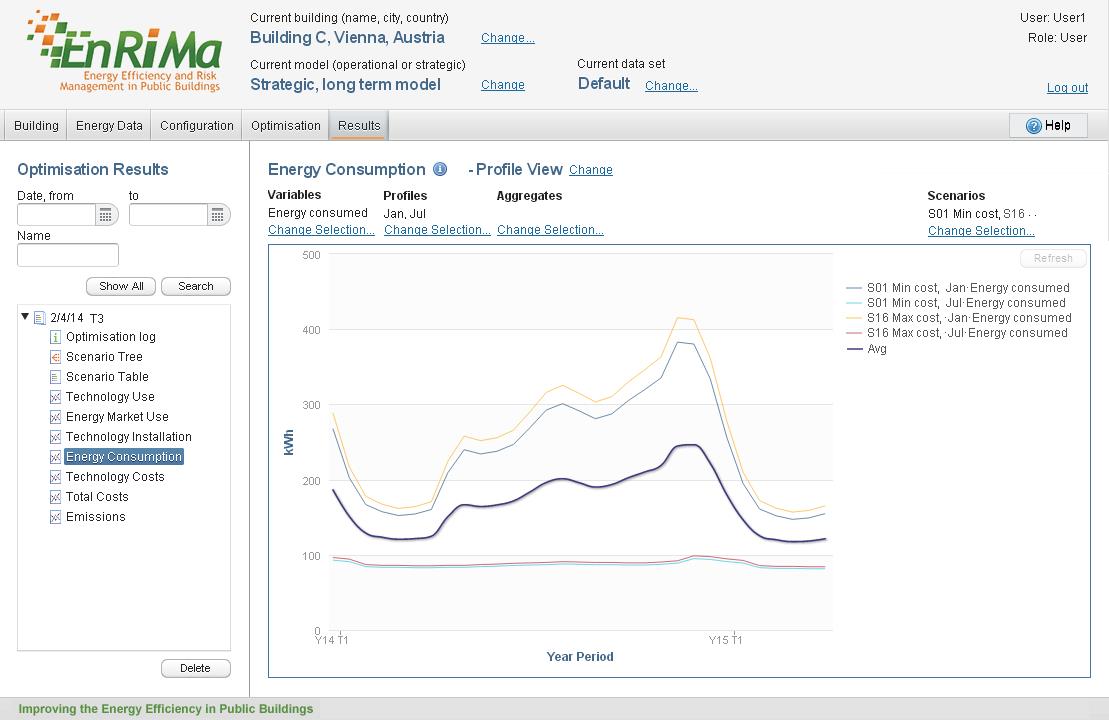Long term optimisation
Long term optimisation using the strategic model
The strategic model suggests a strategy for the investment in technologies or the decommissioning of existing ones, given a set of input parameters that describe these technologies and the tariffs used to buy and sell energy. The DSS generates a number of scenarios, each describing a possible future development of the parameters. The DSS then determines the best strategic decisions for today, considering the future possible scenarios. In addition, the future building performance and investments for each possible scenario is calculated. In order to perform the calculations, the DSS needs to be configured with numerical values that depict how parameters, such as electricity prices, may change over the forthcoming years.
The strategic decision model is working on data sets covering up to 15 years. In general, parameters that can change over time, such as electricity prices and the maintenance cost of technologies, are expressed using a base/current value and an anticipated future development.
The DSS comes pre-configured with a set of selectable values for the yearly development. If desired, the pre-configured values can be changed.
Making use of the Strategic Model Result
You can use the result from the strategic model to make informed technology investments, as well as a mean to prepare for external changes, such as a change in energy prices. For example, if you are considering an investment in solar panels, the strategic model can calculate when and if this investment is a viable option. The strategic model can also suggest when to decommission a technology. To help prepare for external changes, the monetary and emission effect of these changes can be calculated by the strategic model. For example, if the subsidy for a technology is expected to increase, the system can calculate how this affects the overall cost of the building. Moreover the strategic model makes it simple to see the effects of an increase in energy prices.






